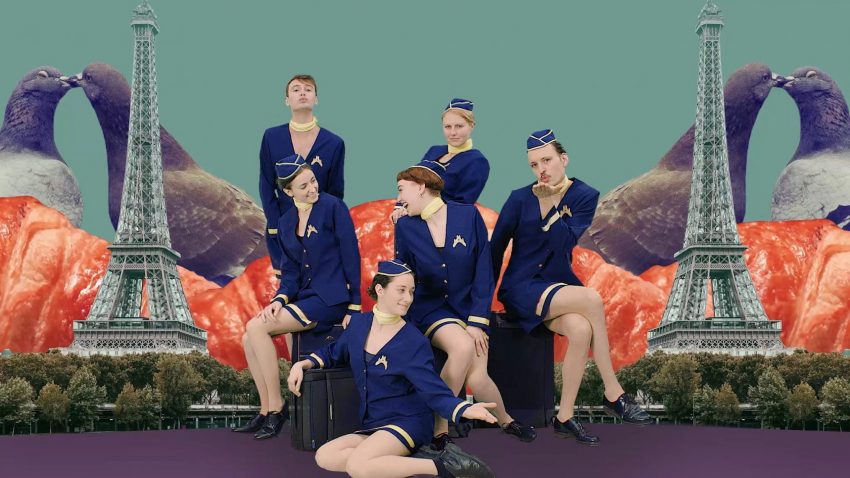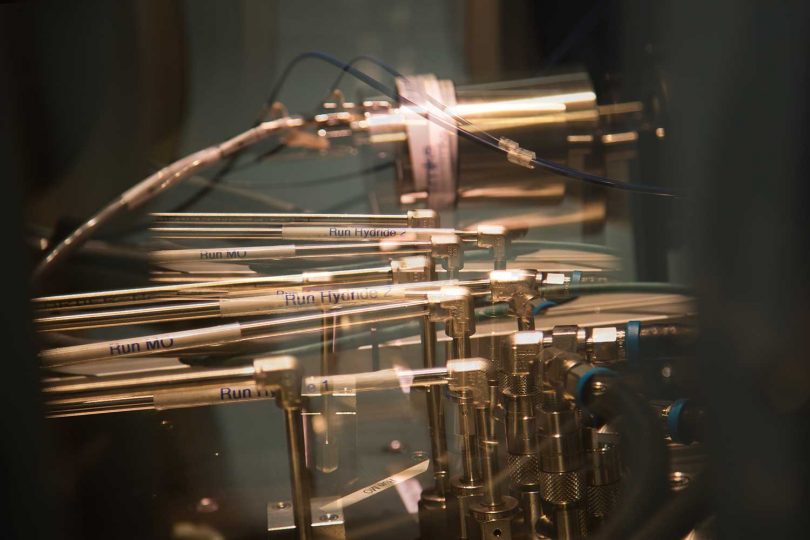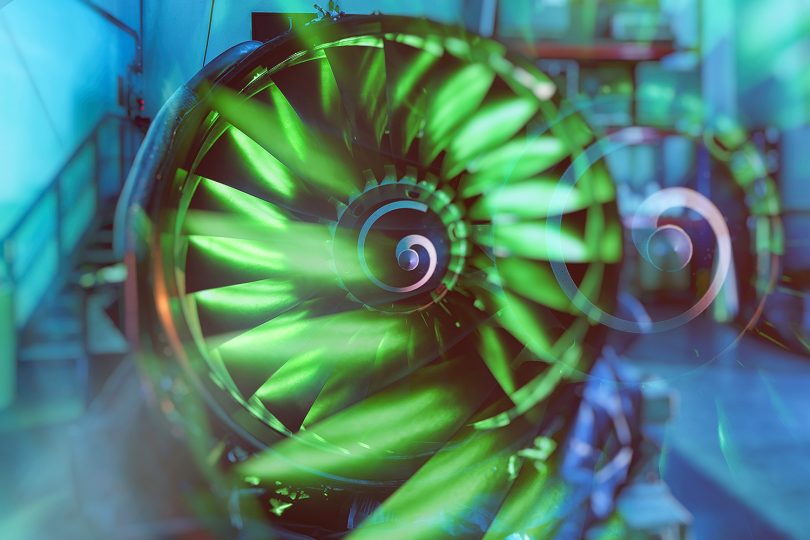Art and science: opening up new perspectives through dialogue Science and Art Lab brings together cutting-edge research and art in a variety of expressions.
What links science and art? What can come out of the interaction between the two fields? We discussed these questions with Henrike Wenzel and Dr. Jule Hillgärtner, who have been leading the Science and Art Lab project at Technische Universität since this summer. They talk about how they want to fill the discourse space between science, art and society with life through the project and present the first two formats of the pilot phase, focusing on the two clusters of excellence SE2A – Sustainable and Energy-Efficient Aviation and QuantumFrontiers.
Mrs. Wenzel, Mrs. Hillgärtner, a project lab for science and art is something of a surprise at a technical university. What is your “Science and Art Lab” all about?
Science and Art Lab sees itself as a platform where science and art can meet. The edges of this platform are open and the media and formats are diverse in order to allow as many different approaches as possible. Our projects are always an invitation to the interested public to approach complex content.
Why is it useful to combine science and art at a technical university, and what can this combination contribute?
We are convinced that the coming together of art and science opens up new perspectives. In the best case scenario, mutual impulses or synergies can even emerge, which can ultimately contribute to jointly advancing solutions for social transformation processes. But first and foremost, meeting people who approach the same issues in very different ways can lead to a different awareness of one’s own actions. In dialogue with each other, reflection happens almost automatically. And this is one of the central characteristics of art.
How can art contribute to a better understanding of science?
We are rather cautious about this, because we do not see art as a mediating authority that aesthetically reproduces or simplifies the results of research and presents them in a pretty way. On the contrary. The art we are concerned with has its own independent position, which, like science, brings an additional level of complexity into play. Nevertheless, it is precisely this perspective that can be used to create access. At best, however, this works in both directions as an attractive interplay: Through art to science, through science to art.
What connects science with art and what can come out of the interplay between the two, or where do you see the interfaces between art and science?
It’s a great question, and one that keeps us busy. Rather than emphasising the (numerous) differences, it makes sense for the idea of the Science and Art Lab to reflect on the similarities between the two spheres. Apart from a certain obsession, which is necessary in both art and cutting-edge research, it is probably a fundamental curiosity and motivation to understand things at a fundamental level. And chance certainly plays an important role in both. But in art, of course, the approach to issues can be much freer, because artists do not have to rely on scientific evidence to develop their work. Here there is the opportunity to speculate, to mix themes, to make surprising connections and to play openly with impulses from outside.
Who are you trying to reach with your formats?
Science and Art Lab is based on the idea of a triangle of science, art and society. That’s why we think about our audience from the very beginning of each format. However, the formats are different: while some are explicitly aimed at audiences outside the university, others are more concerned with bringing scientists and artists at TU Braunschweig into a close dialogue, which – at least for the time being – tends to take place internally.
Your first format is the short film evening Fly High on 26 September in collaboration with the Cluster of Excellence SE2A and in cooperation with the Braunschweig International Film Festival. What can visitors expect?

The short film “Apocalypse Airlines” shows a “fake” advertisement for a fictitious airline that confronts us with our own contradictions: Camille Tricaud, Franziska Unger, 2019, photo credit: KurzFilmAgentur Hamburg e.V.
We are pleased to invite you to a very varied evening: With a panel discussion, the presentation of the Cluster’s latest research results, the premiere of the SE2A image film and our short film programme. We will show a total of ten videos dealing with flying: There is a very humorous and critical music video, a silent film recording of Wilbur Wright’s first flight attempts, a very quirky depiction of a future vision on the idea of “teleportation” and, just recently added, an early film by Stanley Kubrick. In both the film programme and the talks, we want to convey a wide range of perspectives on flying: technical and natural, socio-political, playful and fantastic.

Filmmaker Jan van Ijken has captured one of nature’s most spectacular phenomena: the mysterious flights of starlings, thousands of which fly in dense flocks. 2015, NL, Courtesy The Artist
Are there any other formats you are planning and if so, which ones?
Yes, the Science and Art Lab residency is also underway. A jury and the members of the QuantumFrontiers Cluster of Excellence selected the artist Mareike Bernien from more than 100 international applications. She will work with the Cluster’s researchers and develop her artistic research project until January 2025. This is similar to a visiting researcher, but with an artistic focus. It is primarily a dialogue between artist and researcher, although we also plan public events to provide selective insights into this process.
What would you like to have achieved by the end of the pilot phase of your “Science and Art Lab”?
We hope to inspire more and more people at TU Braunschweig and beyond with the idea of our lab. And that we can try out different formats during the pilot phase: In addition to the short film evenings and the residency, we are currently planning an open space screening in the city centre. Here we want to organise workshops, screenings, discussion evenings and reading afternoons. We are also increasingly networking with similar initiatives at universities in Germany and internationally. The topic of “Science and Art” is in the air at the moment – so it’s good that TU Braunschweig is at the forefront. At the same time, we want to join forces with others to share best practice and achieve greater visibility.
Thank you very much!


